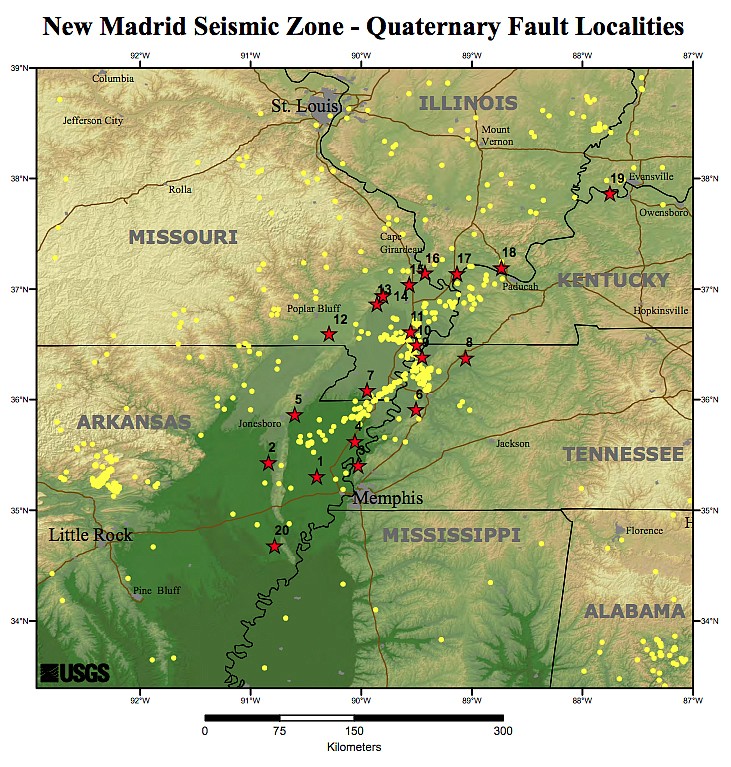Seismic waves from an earthquake in the New Madrid area are not expected to hit at 10:17 a.m. today - that's only the scheduled time of an annual earthquake drill - but Missouri's insurance department timed with the drill a reminder for people to think about earthquake insurance.
"Missourians are urged to consider earthquake insurance as a means to help them recover financially in the wake of a catastrophic earthquake event in Missouri," the state's Department of Commerce and Insurance announced Wednesday in a news release coinciding with this morning's Great Central U.S. ShakeOut drill.
The department cited a recent Earthquake Insurance Market Report, issued by the department, that showed dramatic declines since 2000 in the percent of residences that would be affected by an earthquake that also have insurance.
"In 2000, over 60 percent of residences in the New Madrid area had earthquake insurance. By 2018, the rate of coverage had declined to just under 14 percent, a decrease of 46 percentage points. In other high risk areas outside of the New Madrid zone, take-up rates also substantially decreased, from 67.6 percent to 46.3 percent over the same period," according to the department.
The report in July also noted, "Earthquake coverage has become less available and less affordable over the last 15-20 years. Where the coverage is available, prices have significantly increased, and consumers are required to self-insure to a greater extent than ever before."
The six counties closest to the active New Madrid Fault area in southeast Missouri saw earthquake insurance rates increase by an average of nearly 700 percent between 2000 and 2018, "and in one county by nearly 1,000 percent."
"In 2000, (an) average annual premium in the New Madrid area was only 64 percent higher than the lowest risk counties of Missouri. By 2018, premiums were nearly 334 percent higher," according to the report.
An earthquake of a similar magnitude as a series of quakes that hit the New Madrid area during the winter of 1811-1812 - magnitude 7.0-7.5 - hitting in the present day would produce insured losses of at least $120 billion, and total economic losses that could reach $300 billion, according to risk modeling assessments cited by the Department of Commerce and Insurance.
The $120 billion in insured losses - in 2011 dollars - "would only be rivaled by a repeat of the 1906 San Francisco earthquake," based on an assessment by risk modeling firm AIR Worldwide. That 1906 northern California quake ignited fires that burned to the ground in San Francisco what had not been shaken down first.
A $300 billion total of direct economic losses would make a modern-day New Madrid quake the costliest natural disaster in U.S. history, along with killing several thousand people, according to a 2008 joint assessment by the Mid-American Earthquake Center of the University of Illinois and the Federal Emergency Management Agency.
"Once the immediate issues of health and safety are achieved, people will be faced with the necessity of recovering financially. It's important that consumers think about their family, their home and consider earthquake insurance as a part of their financial readiness strategy," Chlora Lindley-Myers, director of the commerce and insurance department, said in Wednesday's news release.
Damage in the Mid-Missouri area from a major quake with an epicenter in the southeast would likely at least include: structural damage to poorly-built buildings; broken dishes, glassware and windows; objects knocked from walls and shelves; overturned furniture; and cracked or broken walls, spires and chimneys, based on shaking intensity and effect projections by the State Emergency Management Agency.

